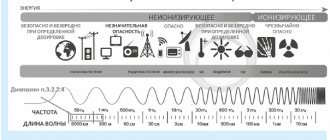Cause of occupational diseases
The cause of occupational diseases is associated with the impact on the human body of unfavorable factors in the working environment.
At the same time, it is quite difficult to establish the cause of the disease if you do not know the working conditions in which the patient works. Only some diseases have symptoms that can be directly correlated with the cause of their occurrence.
Therefore, assessing the working conditions of employees is an important undertaking, because it not only determines the negative factors affecting them and their danger to health, but also helps to take measures to minimize the harm caused.
In practice, it is customary to identify the following causes of occupational diseases:
- Exposure to chemical factors leads to various intoxications of the body and damage to various human organs.
- Exposure to dust – affects the respiratory organs.
- Exposure to physical factors, which include vibration, ultrasound, and electromagnetic vibrations.
- Caused by overstrain at work - due to tension in the nerves and muscles, various neuroses and diseases of the nervous system appear.
- Exposure to biological factors - a person becomes ill with diseases caused by infections and bacteria as a result of work
What are occupational diseases
An occupational disease is an illness or other health disorder that appears in an employee as a result of exposure to production factors that are dangerous or harmful.
At the same time, the Labor Code of the Russian Federation defines as harmful any production factor that can cause a disease in the employee affected by it.
A hazardous production factor is a production factor that leads to injury to a worker.
The consequence of an occupational disease is the onset of temporary or permanent loss of ability to work for a person working at an enterprise.
If the disease is caused by exposure to harmful and dangerous factors at work, the employee must be paid compensation, additional days of rest, insurance, preferential retirement, etc.
How to apply for recourse for an occupational disease?
Watch a video that will tell you what payments are due in case of an occupational disease. What payments are due to an employee with an occupational disease. In the event of loss of ability to work, the employee has the right to receive compensation for the harm caused to him. This is enshrined in Art. 8 Federal Law No. 125 “On Compulsory Social Insurance” dated July 24, 1998. Let’s consider what payments from an organization in case of occupational illness the law provides for:
- payment for temporary disability;
- one-time payment upon receipt of an occupational disease;
- monthly payment to an employee who has lost his ability to work;
- other compensatory payments.
Regression due to occupational disease miner
The most important point in the process of approval of an occupational disease is the passage of a medical social examination. During this process, doctors study the circumstances of your application, based on the documentation described above.
List of occupational diseases The most common trade union diseases that occur among workers in various specialties.
- Toxic damage to the nervous system. For example: encephalopathy, polyneuropathy, etc.
How to prove an occupational disease. how to register an occupational disease
The document contains 4 sections, each of which is arranged based on the impact of adverse factors on the employee:
- Diseases caused by exposure to chemicals (including poisoning).
- Diseases provoked by the influence of physical production factors.
- Diseases that developed under the influence of unfavorable biological causes.
- Diseases that arise as a result of physical activity and functional overstrain of certain organs or body systems.
Each section contains a list of diseases, as well as a disease code, the name of an unfavorable factor and an external cause code.
Classification and types of occupational diseases
Classification
Occupational diseases are usually classified according to the harmful factors that led to the appearance of this disease.
- Diseases caused by exposure to chemical factors are diseases associated with disruption of the respiratory system, circulatory system, excretory system, nervous system, etc.
- Diseases caused by exposure to dust.
- Diseases caused by exposure to physical factors - vegetative polyneuritis, noise sickness.
- Diseases caused by ionizing radiation – radiation sickness.
- Diseases caused by changes in atmospheric pressure - decompression sickness, acute hypoxia.
- Diseases caused by exposure to biological factors - tuberculosis, dysbacteriosis, anthrax, etc.
- Diseases caused by overstrain and overload.
- Diseases caused by unfavorable meteorological conditions - overheating, convulsive illness,
- Allergic diseases - dermatitis, asthma, conjunctivitis, eczema.
- Oncological diseases.
Types of diseases
The law establishes two types of occupational diseases - acute or chronic.
- Acute diseases occur after an employee has been exposed to a harmful factor for a short period (usually during 1 shift).
- Chronic diseases arise due to the fact that an employee has been exposed to a negative factor for a long period of time. Most often, this happens due to the fact that the enterprise uses outdated equipment, technologies, tools, etc. Also, an insufficient number of protective equipment or their complete absence can lead to the development of a chronic disease.
Classification of occupational illnesses
As such, a complete and unchangeable register of occupational illnesses does not exist. It is customary to use the indicative grouping given in Order 417.
At the same time, doctors divide diseases into two more subgroups:
- Actually professional. This includes diseases whose cause is beyond doubt. It is related to production conditions and the specifics of the patient’s specialty. For example, silicosis is caused by silica dust, and intoxication occurs due to inhalation of industrial poisons.
- Common ailments, the clinical picture of which changes for the worse under the influence of the situation at work. For example, health workers can get tuberculosis, this will be recognized as an occupational disease. And rural workers often suffer from bronchial asthma. The disease is caused by chemicals with which the latter have to come into contact.
Based on the factors influencing the disease, they are divided into the following groups:
| Nature of harmful effects | Examples |
| Chemical | Acute and chronic intoxication; skin diseases and allergies; neoplasms |
| Dust factor | Silicosis; silicates; metalloconiosis; anthracosis; pneumoconiosis; bronchitis |
| Physical impact | hearing loss; vibration disease; radiation sickness; frostbite |
| Overstrain of individual organs and systems | Myofasciitis; polyneuritis; radiculoneuritis; asthenopia; myopia |
| Biological harmful effects (fungi, antibiotics, etc.) | Dysbacteriosis; cutaneous candidiasis; brucellosis; glanders; anthrax |
Attention: the given classifications are relative. They are used as examples, not guidelines.
Legislation
At the legislative level, recording and investigation of occupational diseases is regulated by the following acts:
- General concepts are established by the Federal Law “On Compulsory Social Insurance against Industrial Accidents and Occupational Diseases” dated July 24, 1998 No. 125-FZ;
- The registration procedure is determined by the Regulations on the Investigation and Recording of Occupational Diseases, approved. Decree of the Government of the Russian Federation No. 967 of December 15, 2000;
- Resolutions of the USSR Cabinet of Ministers dated January 21, 1991 and the Council of Ministers dated August 22, 1956 established lists of positions and professions that are entitled to additional leave, early pensions and other benefits. List No. 1 includes professions designated by the Ministry of Labor as particularly difficult and dangerous. List No. 2 names professions that affect the health of employees, but are not defined as particularly harmful;
- Order 417n - a list of occupational diseases, if detected, an investigation is carried out, the employee is given additional benefits, and free medical care is provided
Register of occupational diseases
In 2012, the Ministry of Health and Social Development approved the classifier of occupational illnesses (order No. 417n dated April 27, 2012). The document lists diseases with the corresponding official characteristics:
- disease code;
- causes of occurrence: name of the harmful factor;
- its code.
All diseases in the order of the Ministry of Health and Social Development are grouped into four sections. They are associated with the main factor of adverse effects on the human body. Namely:
- Chemical influence, including causing various types of poisoning.
- Physical working conditions causing potential disability.
- Adverse biological effects on humans.
- Physical activity leading to persistent changes in the functions of organs and systems of the body.
Hint: the register of occupational diseases is constantly updated and revised.
You can view the full version as of the current date on the official website of the Ministry of Health and Social Development. The procedure for classifying a disease as an occupational one is contained in government decree No. 967 of December 15, 2000.
Download for viewing and printing:
Order of the Ministry of Health and Social Development of the Russian Federation dated April 27, 2012 N 417n “On approval of the list of occupational diseases”
Decree of the Government of the Russian Federation of December 15, 2000 N 967 (as amended on December 24, 2014) “On approval of the Regulations on the investigation and recording of occupational diseases”
Accounting and investigation
The procedure for recording and investigating occupational diseases can be divided into several stages.
Diagnosis and information about the identified disease
After an employee has applied to a medical institution that identifies the fact of an occupational disease, the doctor must make a preliminary diagnosis.
After this, within 1 day he informs the Rospotrebnadzor body and the employer about the detection of an occupational disease. If two or more people are affected by the disease, information is provided for each of them.
After receiving the notification, Rospotrebnadzor must:
- Conduct an investigation into the circumstances that led to the disease;
- Compile a sanitary and hygienic description of the patient’s working conditions;
- Notify the labor inspectorate.
The medical institution that made the final diagnosis must notify interested parties about it within 3 days.
Formation of a commission at an enterprise
Expert opinion
Mikhailov Vladislav Igorevich
Legal consultant with 8 years of experience. Specializes in criminal law. Member of the Bar Association.
Based on the order of the manager, a special commission is formed at the enterprise to investigate the occupational disease. This must be done within 10 days from the date of the final diagnosis.
The commission includes 5 people:
- Director of the company;
- Occupational safety specialist;
- Representative of a medical institution;
- Representative from the employee side (trade union body);
- A representative of Rospotrebnadzor is also the person who heads the commission to investigate an occupational disease.
Investigation into the circumstances of the occurrence of an occupational disease
During the investigation, the employer must take the following actions:
- Provide access to any materials about working conditions at the site of occurrence of the occupational disease;
- Carry out the necessary procedures - examinations, measurements, analyzes, etc. All activities are carried out from the employer’s funds.
- Keep records and save all documents that are compiled during the investigation.
During the work of the commission, it must establish the circumstances and causes that led to the occurrence of the disease, identify those responsible, and also prescribe measures to eliminate the consequences and prevent further cases.
Within 3 days after completion of the investigation, the commission draws up a report.
Drawing up a report on a case of occupational disease
The act is drawn up in 5 copies and contains the following information:
- The reasons that led to the occurrence of an occupational disease;
- Persons guilty of violating norms or other legislative and internal acts;
- The degree of guilt of the employee himself in %, if the incident is a consequence of his negligence;
- Information about work under special conditions.
The injured employee has the right not to sign the act if he does not agree with its results. It regulates in writing the reasons for refusal.
Within a month, the employer is obliged to issue an order on the implemented measures to prevent occupational diseases and send a copy to Rospotrebnadzor.
Tip 2: How to register an occupational illness
Preparation and approval of the list of occupational diseases is the responsibility of the government of the Russian Federation. In practice, all lists are not properly systematized, as a result of which it is sometimes difficult to prove and register an occupational disease. You need to be patient and strong.
Prepare the required documents properly. You must have a certificate in your hands with a doctor’s note stating that the disease is occupational. You will also need a discharge summary. if you were treated in a hospital.
Provide documents to the clinic at your place of residence and report your intention to register for an occupational disease. When visiting a doctor, it is necessary to describe in detail all the symptoms and their connection with professional activities. Make sure that what is said is recorded in the medical record. After this, you will be given a referral either to a dispensary or to specialized doctors.
Go get tested. The medical commission must make a full diagnosis of your health condition. During the examination, describe to doctors in great detail the symptoms and their relationship with work activity. If the commission determines that the disease is indeed occupational, it is obliged to note this in the medical record. You will then be given two signed statements. Keep one for yourself, give the second to your employer.
In practice, doctors are very reluctant to deal with the issues of convening commissions that are authorized to register an occupational disease. You must be mentally prepared for this. When faced with such a case, do not hesitate to remind the specialists that they are not fulfilling their duties. Feel free to threaten legal proceedings;
Also, don't forget that regular trips to the doctor probably won't sit well with your manager. In order not to join the ranks of those fired for absenteeism, ask doctors to issue a certificate stating that on a specific day and time you were seen by him. In the document, check for the date, period of visit, as well as the doctor’s signature and seal. By presenting all the certificates to the employer, you will protect yourself from his claims.
Prevention of occupational diseases
If an employee is exposed to external factors, this does not mean that he will definitely get sick. In this case, preventive measures play an important role.
They consist of the following actions:
- Elimination of negative factors from work processes, replacement of equipment or materials;
- Reducing the time during which the factor affects the employee;
- Issuance of personal protective equipment;
- Training workers in the use of personal protective equipment;
- Informing workers about harmful factors in their workplaces;
- First aid training;
- Carrying out physical education breaks;
- Carrying out periodic medical examinations.
Payments and compensations
At the expense of the organization
The organization pays the employee for sick leave issued due to incapacity for work.
Its calculation is carried out according to general rules, with the exception of several situations:
- The benefit is paid in the amount of 100% regardless of the length of service;
- The maximum benefit amount is 4 times the amount of payment, which is established by law 125-FZ;
- The benefit after payment is reimbursed 100% from the Social Insurance Fund.
If the “Direct Payments” project operates in the region, the organization only calculates the benefits due, after which it transmits the necessary information to the Social Insurance Fund. He, in turn, already makes the payment.
The head of the company can, of his own free will, provide financial assistance to an employee who has received an occupational disease.
The employee has the right through the court to demand compensation from the employer for the harm caused. Its amount cannot be reduced by compensation and benefits already paid. When calculating payments, you can include not only direct and indirect costs, but also moral damage.
At the expense of the Social Insurance Fund
Social insurance against occupational diseases has been provided in Russia since 2000. An employee is considered insured if an occupational disease occurs during the performance of his work duties.
In each specific case, documents are studied in order to establish whether the employee is entitled to compensation or not.
If the case is recognized as insured, then he is paid:
- Monthly compensation - calculated as average earnings adjusted by the percentage of disability.
To assign a payment, you must provide the following to the Social Insurance Fund:
- Act on the occurrence of an occupational disease;
- ITU conclusion on the degree of lost ability to work;
- A copy of the employment agreement or work record book;
- Certificate of average monthly earnings;
- Application for payment.
In addition, the Social Insurance Fund can compensate for the following costs:
- For the purchase of medicines;
- For paid medical care, if required;
- For rehabilitation in a sanatorium;
- For the manufacture of prostheses and their repair.
Industrial accident (at work)
How to conduct a special job assessment
Hot retirement experience for men: what does it include in 2021, is it possible to retire earlier
Who should conduct a special assessment of working conditions in 2018
Occupational Illness
- a disease that develops as a result of exposure to risk factors caused by work activity.
The current list of occupational diseases in the Russian Federation (approved in 1996) includes 150 diseases. It consists of three sections. The first contains the name of diseases in accordance with the International Classification of Diseases.
The second section of the List contains hazardous, harmful substances and production factors, the impact of which can cause specific specified diseases;
The third section contains an approximate list of work carried out and production facilities where certain occupational diseases may occur.
The list of occupational diseases is the main document that is used in establishing a diagnosis of an occupational disease, resolving issues of examination of work ability, medical, social and labor rehabilitation, as well as some issues related to compensation for damage caused to an employee due to damage to health.
Occupational diseases
diseases that developed suddenly, after
a single (during no more than one work shift) exposure to harmful production factors.
diseases that arise as
a result of prolonged exposure to harmful factors
. In the case of initial mild forms of occupational diseases, a conclusion may be given on the need to stop working in specific production conditions and rational employment in a new workplace.
Occupational diseases
Occupational diseases include diseases of the cardiovascular system (arterial hypertension, coronary heart disease), neuropsychiatric diseases such as neurosis, diseases of the musculoskeletal system (for example, lumbosacral radiculitis), a number of respiratory diseases, etc.
Working in conditions of exceeding hygienic standards is a violation of the legislation of the Russian Federation and the basis for regulatory organizations to use the rights granted to them by law to apply sanctions for harmful and dangerous working conditions.
Each employee must receive complete information about working conditions, the degree of their harmfulness, possible adverse health effects, necessary personal protective equipment, work and rest regimes, medical and preventive measures, and measures to reduce contact with harmful factors.
Prevention of occupational and work-related diseases
Prevention of occupational and work-related diseases consists of a system of measures aimed at reducing the risk of developing deviations in the health status and diseases of workers, preventing or slowing down their progression, and reducing adverse consequences. It includes measures of a medical (sanitary-hygienic, treatment-and-prophylactic), economic, legal (state) nature.
In general, the prevention of these diseases is carried out through legislative regulation of risk factors (for example, establishing maximum permissible concentrations and maximum permissible limits) and the implementation of targeted programs to create healthy, safe working and living conditions at work, and an adequate system of health care and medical and social security for workers.
Labor activity is multifaceted and is not always harmless to health. There are industries with harmful and dangerous working conditions.
In conditions of a potential threat to health, there is a high probability of developing an occupational disease. This article will reveal the basic concepts that accompany this phenomenon, determine which disease should be called an acute occupational disease, poisoning, and also consider which institution the victim should contact and how the registration procedure takes place.
Benefits and allowances for employees who have acquired acute occupational diseases
According to the Federal Law “On Compulsory Social Insurance” No. 125, every officially employed employee who has received an occupational disease has every right to count on compensation, which consists of the following:
- compensation for damage due to temporary disability;
- to receive one-time cash assistance due to the occurrence of an occupational disease;
- monthly monetary compensation if an occupational disease causes loss of ability to work;
- other monetary compensation.
It is worth noting that monetary compensation is calculated by the direct employer and paid from the Social Insurance Fund . This is clearly regulated by Article 184 of the Labor Code of the Russian Federation.
Recommended reading: An antisocial lifestyle is
It is also necessary to take into account the fact that payment amount
- one-time assistance in the amount of no more than 85 thousand rubles;
- monthly payment no more than 65.5 thousand rubles;
- benefits due to loss of ability to work can be assigned in an amount of no more than 270 thousand rubles.
In addition, you can count on monetary compensation from your direct employer. The law does not provide for a clear amount, and its size directly depends on how the parties agree among themselves.
What is meant by acute occupational disease, types
When covering this topic, you need to understand what an occupational disease is. The answer to this question is contained in the country's legislative framework. The Regulations on the Investigation and Recording of Occupational Diseases contain all the necessary points.
Thus, an occupational disease is an illness that was provoked by the negative impact of working conditions.
According to the Regulations, an acute occupational disease is an illness that arose not as a result of a long period of exposure to harmful work activities on a person, but in a short period of time, that is, a day or a work shift. A worker can be dramatically affected by one or another negative factor and provoke permanent loss of ability to work.
Acute illness or poisoning can result from:
- Violation by an employee of established safety standards;
- Poor quality technical production process that caused the accident;
- Contact with dangerous microorganisms during the performance of work duties.
An event like this cannot be ignored. A number of activities should be carried out aimed at studying the situation and understanding how the person’s health was harmed.
Expert opinion
Mikhailov Vladislav Igorevich
Legal consultant with 8 years of experience. Specializes in criminal law. Member of the Bar Association.
For these purposes, the employer is obliged to conduct an investigation, the rules of which are also determined by law. Acute occupational disease or poisoning is subject to recording.
In addition, this event is an insured event for the employee.
Currently, all occupational diseases according to their types can be divided into several special groups. Each category differs in the nature of damage and the nature of its occurrence.
The main factors of industrial diseases are:
Exposure to chemicals. This category is typical for chemical industry enterprises, as well as those organizations that use toxic substances in their work.
- The influence of industrial aerosols. This factor is often encountered in factories that produce building materials or those associated with metallurgical processes. In other words, working conditions in such organizations are accompanied by air pollution.
- Radioactive radiation. A dangerous category found in industrial enterprises whose work involves the extraction or direct interaction with radioactive substances and ionizing radiation.
- Biological factors. This refers to the influence of microorganisms, living cells, spores, and so on, which can cause a number of diseases in a worker if he does not adhere to safety precautions.
- Physical activity and overexertion. This category is found in enterprises associated with heavy physical labor.
Where to contact an employee with an occupational disease and what documents are needed
If for some reason there is a deviation from established safety standards and a subordinate develops an acute occupational disease or poisoning, the employer must immediately transport the victim to the nearest medical facility. However, the employee has the right to independently seek help.
If the diagnosis is confirmed, doctors are required to send a message to the Center for State Sanitary and Epidemiological Surveillance within one day. In addition, they notify the employer of this fact.
Next, the specified Center carries out verification activities. The duties of his representative include studying the victim’s place of work and finding out the causes of the incident. Based on the results of the work, a sanitary and hygienic characteristics of work should be drawn up.
The compiled document, along with a copy of the work record book, an extract from the medical record and information about periodic occupations. examinations will be needed by the hospital that has identified the fact of an acute occupational disease.
It is the healthcare institution that is obliged to refer the patient for treatment to an occupational pathology center within a month and provide the listed documents.
The competence of the center for occupational pathology includes drawing up a final conclusion about what happened and sending notification to all interested parties, including the employer, within three days.
When applying for compensation, an employee must present originals and copies of the following documents:
Having received the specified package of documents, the FSS considers the specific case and individually determines the degree and amount of assistance. Depending on the situation, this could be a one-time cash payment, a monthly benefit, or another type of damages.
Of course, the fact that an employee suffers from an acute occupational disease negatively affects the employer’s activities. The employer, by law, must conduct an appropriate inspection, create a commission to investigate the accident and punish those responsible.
Perhaps the blame will not lie with the victim himself, but with the head of the department, whose responsibilities included preventing negative factors at work.
In conclusion, attention should be paid to the right of every employee to have a workplace that meets labor safety standards in all respects. The employer must regularly monitor the implementation of safety regulations and monitor compliance with the schedule of preventive seminars.
If an employee receives an acute work-related illness, the employer cannot avoid problems with inspections by regulatory authorities, which can prove his guilt and bring him to justice.
Expert opinion
Mikhailov Vladislav Igorevich
Legal consultant with 8 years of experience. Specializes in criminal law. Member of the Bar Association.
What is meant by an acute occupational disease, how to distinguish it and understand that it has occurred and how to begin investigating the causes? All this can be learned from the article.
Procedure and rules of registration
Registration and receipt of benefits is carried out in several stages, namely:
- Registration of the fact of receiving an occupational disease.
- Registration of the manual itself.
Registration of the fact of receiving an occupational disease
To obtain documentary evidence of the occurrence of an occupational disease, an employee must:
- Contact any medical facility. Based on the request, health workers notify the employer and the Social Insurance Fund about the possible presence of an occupational disease.
- Based on the notification, an inspection is carried out, where a corresponding act is drawn up.
- The drafted act is sent for approval to the Ministry of Health. The statement will mean that the victim has an occupational disease.
- Based on the report, the victim will be sent to the Center for Occupational Pathology, where an appropriate conclusion will be issued.
Documentation of benefits and benefits
It should immediately be noted that the Social Insurance Fund is responsible for .
Therefore, the injured party should:
- Contact your local physician at your place of residence.
- Upon application, the victim will be given a referral to undergo a full medical examination.
- After this, the therapist prepares the entire package of necessary documents and sends the victim to a commission (medical and social).
- Upon referral from the therapist, the commission confirms the fact that the injured party has an occupational disease, determines its degree and issues an appropriate documentary conclusion.
- With this conclusion, the injured party contacts the Social Insurance Fund and begins the procedure for obtaining benefits.
In addition to the conclusion itself, the victim must provide the following list of documents:
- original passport;
- act on the occurrence of occupational diseases;
- a copy of your work book, which confirms the fact of work in production;
- original certificate showing your average salary.
Based on the documents provided, a decision is made to provide financial assistance.
Occupational diseases at work are described in the following video:
Still have questions? Find out how to solve exactly your problem - call right now:
Didn't find the answer? Check out other materials
Causes
The causes of pathologies include:
- The technological process is imperfect. Technologists have not fully thought out how employees will be protected from exposure to harmful factors. For example, exhaust ventilation is not provided or RPE is not suitable for the job.
All of the above reasons can cause pathological changes in the body.
Periodic medical examinations
Conducting initial and periodic health examinations of employees is a mandatory event, as interpreted by labor legislation. Every enterprise, no matter what form of ownership it is, must organize medical examinations.
Algorithm for conducting MO:
- Based on the results of a special assessment of working conditions, experts identified harmful factors, and also identified types of hazardous work. If a special assessment has not been carried out, then the employer has the right to independently identify these nuances.
- The special assessment cards indicate how often it is necessary to undergo examinations, and in what direction.
- The enterprise prepares a list of employees who must undergo a medical examination and concludes an agreement with an organization that has the right to provide these services.
- The actual event can be organized at the organization's medical center or in a medical facility.
- Based on the results of the medical examination, a report is issued that stipulates that employees are allowed to work (admission with restrictions or suspension from work).
Sanitary and hygienic characteristics of working conditions
In 2008, instructions were developed and put into effect on the collection of information characterizing working conditions according to sanitary and hygienic criteria. Compilation is carried out by Rospotrebnadzor. To issue a reference, you need to request data from the organization.
After the employee has passed the MSEC. If the enterprise was liquidated for some reason, then information about it can be obtained from other documents that stipulated the impact of harmful factors during the period of work.
This can be a copy of sheets from the work book, notarized, as well as training logs, various extracts and copies.
To prove that the cause of the occurrence was hazardous factors and working conditions that do not comply with standard indicators, the following information is presented in the sample characteristics:
- About harmful factors for this industry affiliation
- About the appropriate work schedule
- About the concentration level of harmful substances
If it is not possible to obtain conclusions on research from expert laboratories, then Rospotrebnadzor independently performs laboratory tests. The results obtained are applied to research.
The PPE and RPE used are documented. In order to correctly draw up the document, it is necessary to obtain an explanation from the person who received the occupational disease.
Procedure for investigating an acute occupational disease
Under the influence of harmful factors, occupational diseases can be diagnosed once.
The investigation is carried out in stages:
- In a medical institution, a diagnosis of pathological change is established in advance
- An immediate message about a case of occupational pathology is sent from the clinic to Rospotrebnadzor
- The Rospotrebnadzor organization, located territorially, clarifies and establishes the reasons for the occurrence of this case. After which a sanitary characteristic for working conditions is drawn up
- The last document is sent to the direct employer or to the place where the employee lives
- The diagnosis is established in a medical institution, and a conclusion is prepared
Commission of Inquiry into Acute Occupational Diseases
If a case of an acute occupational disease is recorded at an enterprise, then it is necessary to conduct an investigation into its occurrence. For this purpose, a commission is appointed, which includes the chairman and members of the commission.
Who is appointed as the chairman:
- Head of the facility
- If the case is classified as more serious, then a state labor inspector is appointed for the given district.
- Chief physician of the Center for Occupational Pathology, which oversees this facility
The composition of the investigation commission may be as follows:
- An occupational safety specialist who works at an enterprise.
- Trade union representative.
- Medical facility employee.
- Other employees related to the organization of the workplace or the development of a technological process.
The employee who received the pathology himself or a person who is his representative can take part in the investigation.
The number of commission members, including the chairman, must be odd; this is determined on the basis that controversial issues during voting are possible and a larger number of votes will remain in priority. It is not allowed to include the direct manager of the facility on the commission.
If an employee is diagnosed with an occupational disease
An employee was diagnosed with an acute occupational disease resulting from work. Next, you need to format it correctly.
Table 1. Actions upon detection of an occupational disease
| Actions | A comment |
| An administrative document appoints an investigation commission | The chairman and members of the commission are appointed based on the incident that occurred. To form a commission, the facility manager is given no more than 10 days from the moment the conclusion is received and the diagnosis is confirmed. |
| The commission begins its work | All documents are raised: cards for issuing personal protective equipment and personal protective equipment, briefing logs, personal briefing cards, compliance of personal protective equipment with standards, how often personal protective equipment was issued, control measurements, inspection of the place of work, special assessment cards of working conditions and other documents that are necessary for the investigation. |
| Based on the results of the work carried out, an act is prepared | The number of copies is at least five. The document is signed by all members of the commission and approved by the chairman. |
To whom should copies of the acts be given:
- To a direct employee who received an occupational disease at the work site
- To the Social Insurance Fund organization to calculate payments for this case
- To Rospotrebnadzor for statistical data
- To the medical institution that made the diagnosis
- To the employer
The document storage period is set at 75 years.











